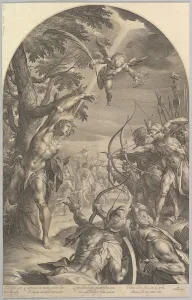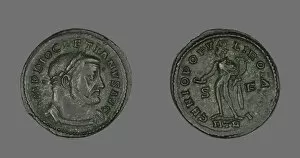Dioclesianus Collection
"Dioclesianus: A Tale of Martyrdom, Power, and Ruins" In the year 1600, Jan Muller immortalized the martyrdom of St. Sebastian, a poignant reminder of Diocletian's reign
All Professionally Made to Order for Quick Shipping
"Dioclesianus: A Tale of Martyrdom, Power, and Ruins" In the year 1600, Jan Muller immortalized the martyrdom of St. Sebastian, a poignant reminder of Diocletian's reign. This Roman emperor left an indelible mark on history through his ruthless persecution of Christians. The Baths of Diocletian stand as a testament to his grandeur and ambition. Created in 1562 by Johannes van Doetecum I and Lucas van Doetecum, these magnificent ruins once housed opulent bathing chambers that symbolized Diocletian's power. Coins portraying Emperor Diocletian offer glimpses into his rule and legacy. From the unknown creator's depiction in 302-303 to the aureus issued by Diocletian himself between 294-305, each coin tells a story of imperial might. Wenceslaus Hollar captured the majestic Baths of Diocletian in Rome during the 17th century. His intricate etchings transport us back in time to witness their former glory before they succumbed to decay. These ancient ruins continue to captivate artists like Wenceslaus Hollar who depicted them again in "Thermaru diocletiani Ruinae" (1651). The crumbling walls evoke both awe and melancholy as we contemplate their past splendor. Another view from a set of Roman Ruins dating back to 1550 reveals yet another perspective on the Baths' magnificence. These structures were not only architectural marvels but also symbols of power for Emperor Diocletian. Through art and archaeology, we delve into the captivating tale surrounding "Dioclesianus. " From martyrdom to grandiose baths and coins bearing his likeness, this enigmatic figure shaped an era that still echoes through time.














